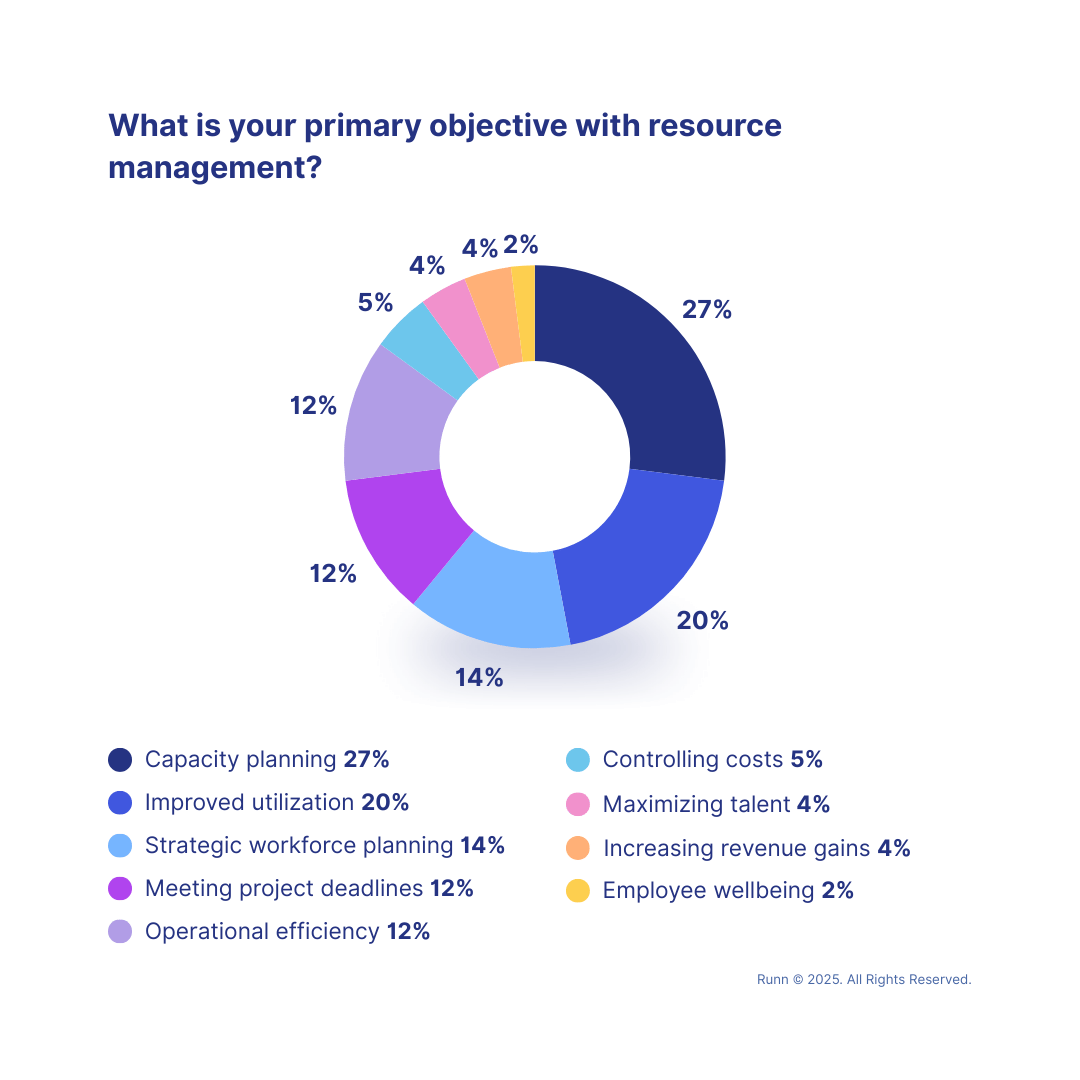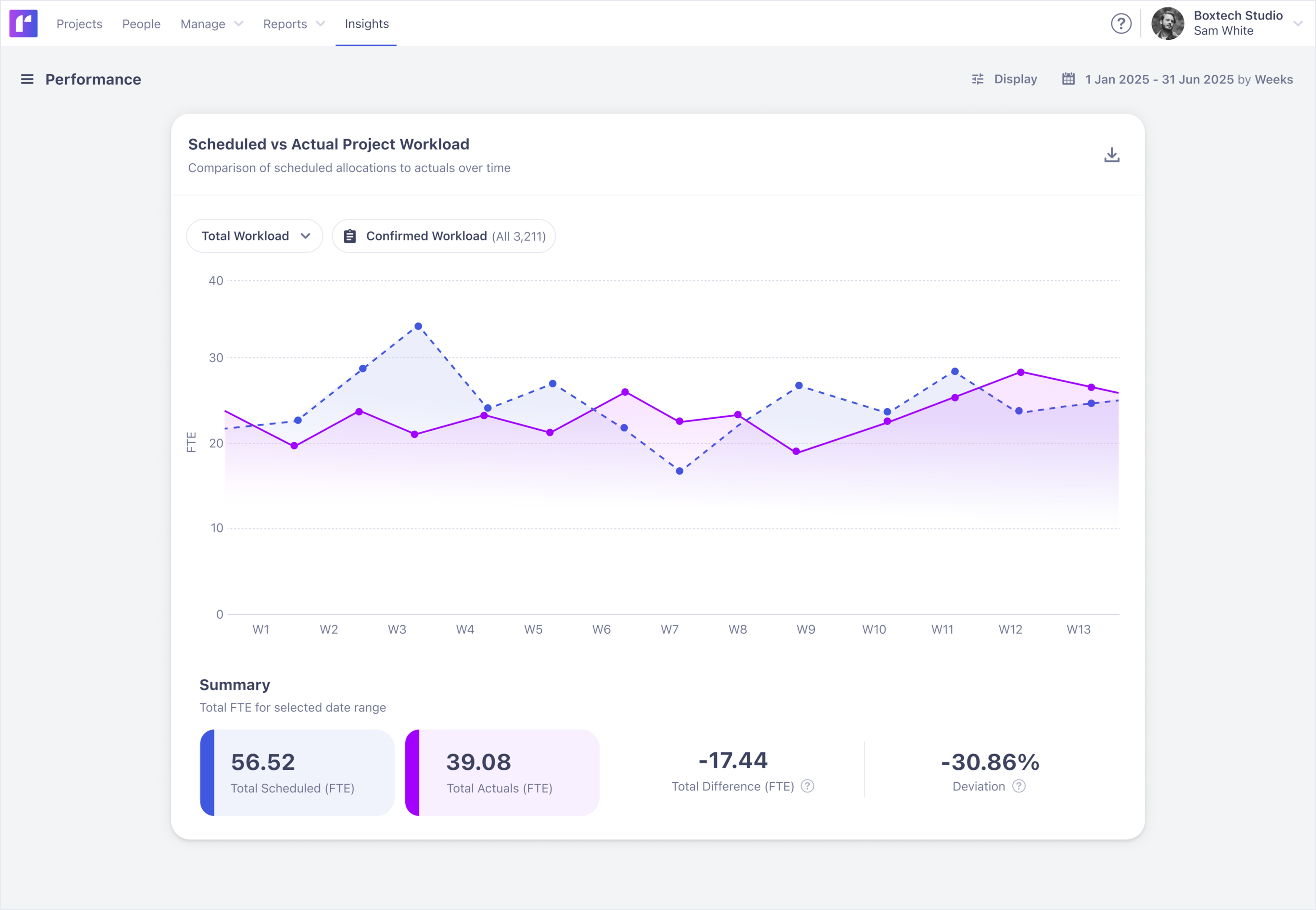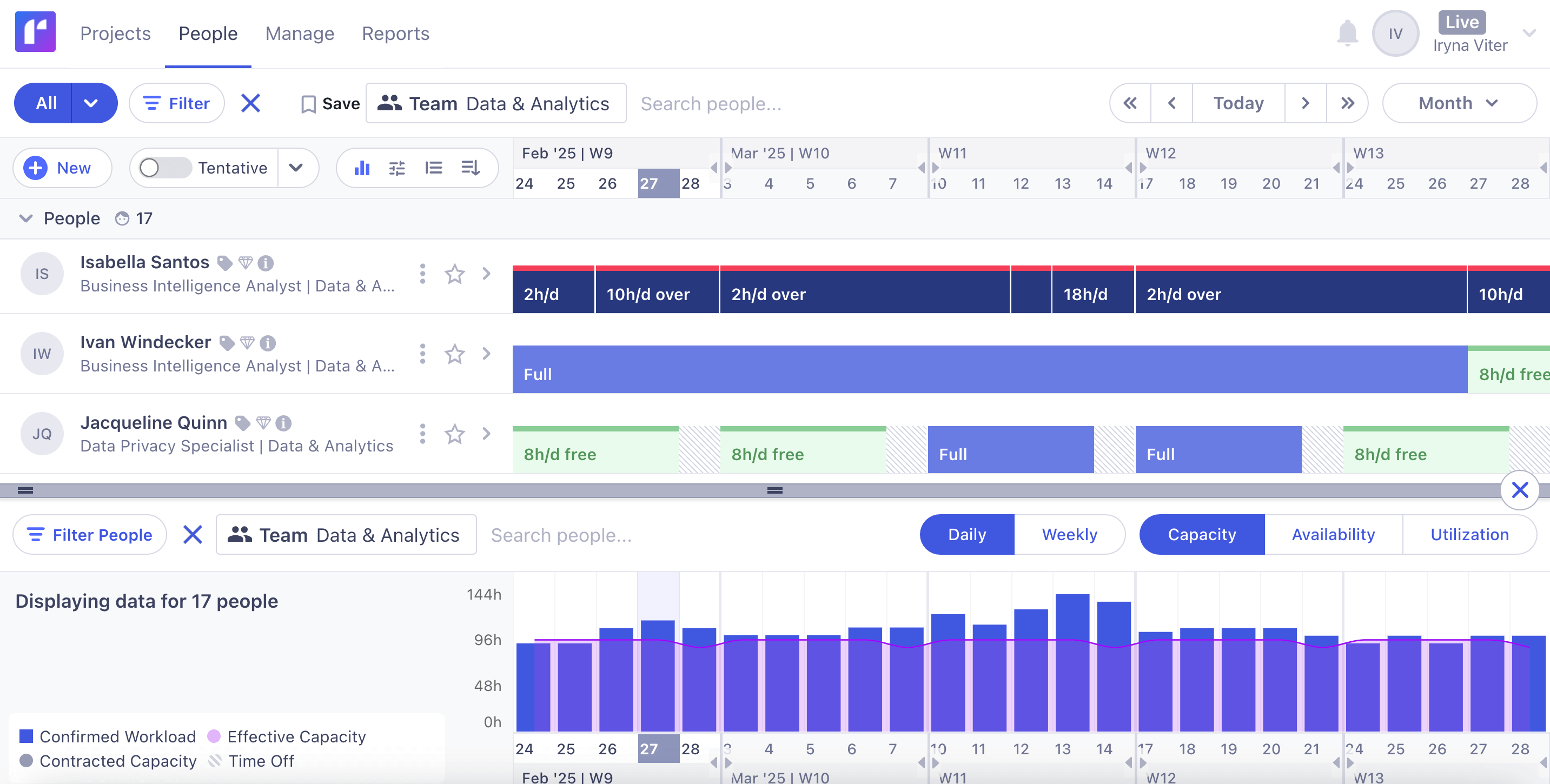5 signs you’ve outgrown resourcing in spreadsheets, and how resource management software improves planning, forecasting, and margins.

Spreadsheets are where most software delivery firms start with resource planning. They’re easy, familiar, and great for getting off the ground.
But as your client portfolio grows, the cracks start to show. Version control gets messy. Updates lag behind reality. Information lives in silos. Suddenly, no one trusts the numbers you’re using to make critical delivery decisions.
Many firms stay stuck here, pushing spreadsheets far beyond what they were designed to do. That’s when resourcing headaches become delivery risks: blown margins, missed deadlines, and burned-out engineers spread too thin. Spreadsheets simply can’t handle the complexity of strategic resource management – forecasting demand, allocating people by skills, and protecting profitability across multiple projects.
If that sounds familiar, your current way of working is no longer fit for purpose. This article walks through five clear signs it’s time to leave spreadsheets behind and consider alternatives built for modern resource management and project planning.
Sign 1: You spend more time on manual updates than delivering work
Sign 2: You stitch together multiple spreadsheets to answer basic questions
Sign 3: You can’t forecast capacity against pipeline demand
Sign 4: You can’t trust your utilization or margin numbers
Sign 5: You can't deliver when asked for more visual, shareable data
If your resource or project managers have to act as data collectors, your resource management process is broken.
Spreadsheets require constant manual updates. Ops leads spend hours chasing updates and collating changes across inboxes and shared drives. Data then has to be re-entered into Jira, timesheets, or finance systems, multiplying the admin load. Copy-and-paste is time-consuming, error-prone, and by the time the numbers are ready, they’re often out of date.
At scale, the admin overhead is unsustainable. Instead of focusing on project planning and client delivery, managers are stuck in an endless loop of chasing, updating, and rekeying data. It's time to break the cycle.
Read more ➡️ Resource Planning in Excel Isn't Sustainable. Here's Why.
When utilization, team availability, and margins live in separate spreadsheets, you don’t have real visibility.
In many firms, resourcing information is scattered across separate spreadsheets: one for each allocation, utilization, and revenue forecasting. Whenever leadership asks for a view across the business, ops leads are forced to spend hours stitching them together.
If you’re waiting days for answers or making decisions on gut feel because the data isn’t there, spreadsheets are holding you back.
Spreadsheets are good at showing what’s happening now – but they don’t help you see what’s next.
With capacity planning ranked the top resource management priority for 2025, according to our research, teams that rely on spreadsheets will struggle to stay ahead of demand.

Forecasting capacity in spreadsheets is clunky at best. Without easy what-if modeling for new SOWs, scope changes, or delays, delivery leaders fly blind when balancing pipeline demand against engineering capacity and the specific skills you need.
You can guess what happens next: some engineers get overbooked while others sit idle on the bench.
Imagine a sales team has closed a new mobile app project. When the delivery lead checks the resource spreadsheet, it’s unclear whether any iOS engineers are actually available to pick up the project. By the time they've got their ducks in a row, delivery confidence (and client trust) are already at risk.
Learn more: 5 Resourcing Problems That Block Project Delivery (and How To Fix Them)
When one calculation shows 75% utilization and another shows 90%, which do you trust to make the call?
Multi-tab formulas crash without warning. Teams enter data in inconsistent ways – one uses hours, another FTEs, and another applies different rate assumptions. Finance might update rate cards, but unless every spreadsheet reflects the change, utilization and margin forecasts become unreliable.
If your delivery and finance leaders don’t trust the numbers, they can’t commit to new projects with confidence. For T&M and fixed-price work with tight margins, that’s a direct hit to profitability.
Senior leadership doesn’t want to read through a spreadsheet. They want clear visuals that make sense at a glance.
Unfortunately, Excel sheets aren’t designed to provide dynamic, shareable dashboards. Building charts means extra work, and they break whenever data changes. Instead of getting a real-time, bird's-eye view of the resource situation, leaders are left with static graphs that are outdated the moment they’re shared.
For firms managing multiple projects and clients, this lack of visibility is a real blocker. Without accessible, visual resource insights, it’s impossible to give clients confidence in delivery or to make strategic staffing decisions internally.

Software delivery firms operate in high-stakes environments. Margins are tight, clients expect transparency, and projects shift constantly. Unlike spreadsheets, purpose-built resource planning software was designed to manage these complexities, giving you:
For organizations scaling beyond spreadsheets, these capabilities aren’t “nice to have”, they’re essential for protecting margins and delivering reliably.
Runn is a resource management platform built for delivery-heavy software and IT firms that need clarity, not complexity. A resource management platform equipped with features designed with strategic resource management in mind, this isn't another generic project management tool.
With Runn, you can:
The result is a smarter, faster way to plan. Instead of wrestling spreadsheets, your leaders can focus on what matters: optimizing resource allocation, keeping projects on track, and protecting margins.

Moving beyond spreadsheets doesn’t have to be disruptive. In fact, the transition can be smooth with the right change management process.
The goal isn’t to rip off the band-aid and replace your firm's processes overnight. It’s to phase in a better way of working while keeping delivery running smoothly.
Further reading: Transitioning From Spreadsheets to Runn for Resource Management ➡️
If you relate to any of these five signs (or all of them), your organization has outgrown spreadsheets. They may have helped you get started, but they won’t take you where you need to go next.
Custom software and IT solutions firms need clarity, confidence, and control to deliver complex projects at scale. And that requires purpose-built resource management software, not spreadsheets.